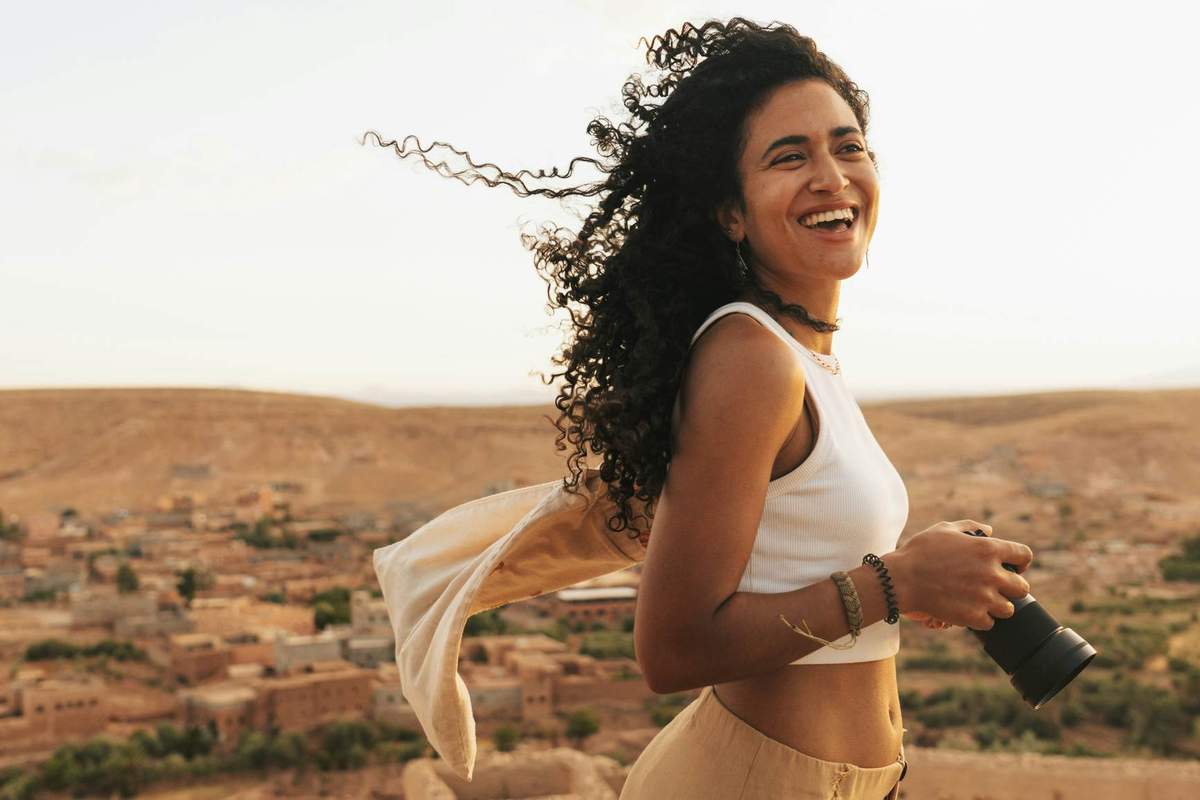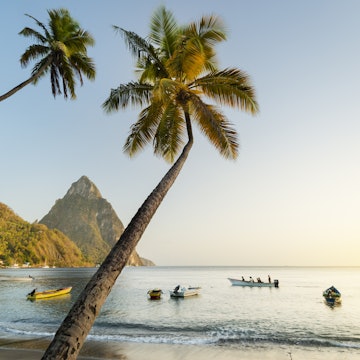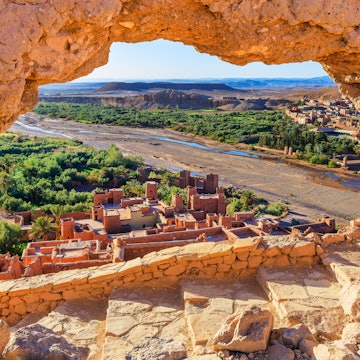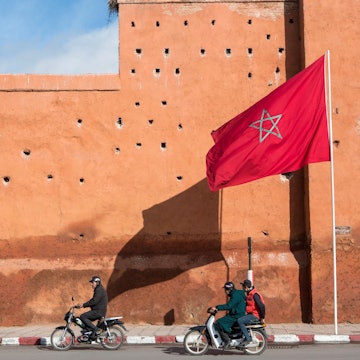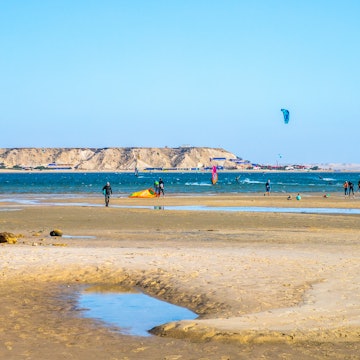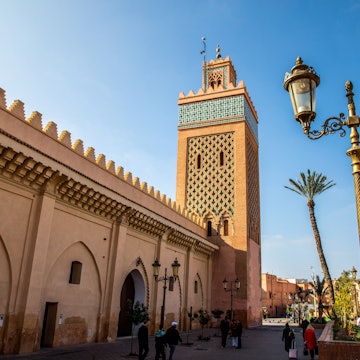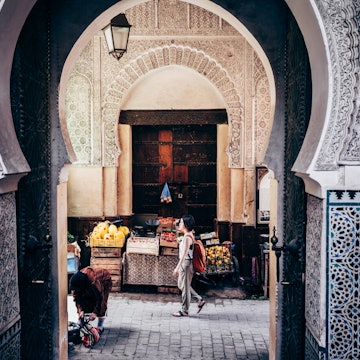

Chefchaouen's medina. arkanto/Shutterstock
Wrapped in the green folds of the Rif Mountains, blue-washed Chefchaouen is one of the most photographed cities in Morocco.
I’ve seen it go from an off-the-beaten-track destination for hippies in search of hashish to a social media star. Now, day-trippers, Moroccan tourists and influencers jostle for position along every aqua-colored alley. But with its laid-back vibe, cultural mix and scenic views at every turn, the Blue Pearl is worth it.
Chaouen, as locals call it, was founded in 1471 as a base for Riffian Amazigh tribes to defend against Portuguese invaders. Muslim and Jewish refugees arrived from Spain in the late 15th century and built Andalusian-style whitewashed houses. The blue hues came later but exactly when – and why – remains a mystery.
Chefchaouen remained isolated and xenophobic – Christians were forbidden entry until Spanish troops occupied it in 1920. Thrown out by the Lion of the Rif, Abd el-Krim, the Spanish returned and remained until Moroccan independence in 1956.
The city is isolated no more, but don’t be a day-tripper. Stay for the weekend and give yourself time to relax and explore – and, yes, get that great shot. Here’s my guide to the ultimate weekend in Chefchaouen.

When to arrive: Arrive early to beat the tour buses. Weekends are the busiest time for local tourism, but if you leave on Monday (or arrive early on Thursday), you’ll see a traditional Riffian market in action. Visiting in spring or autumn avoids the peak summer crowds.
How to get from the airport: The nearest international airport is Tangier Ibn Battouta; from there take a grand taxi to Chefchaouen, a petit taxi to Tangier’s CTM bus station for the 2.5 hour journey or arrange a private transfer through your accommodations.
Getting around town: The medina is made for strolling. To go further afield, take a petit taxi. There are grand taxis direct to Akchour.
Where to stay: If you’re on a budget, Riad Baraka is a comfortable riad turned hostel, with dorm beds from 100 Moroccan dirham (US$11) and private rooms from Dh275 (US$30). La Petite Chefchaouen, from Dh780 (US$85), is a contemporary-style riad with a superfriendly staff and stellar views. Riad Cherifa, from Dh850 (US$93), is a beautifully decorated traditional riad, with a small pool and hammam.
What to pack: Chaouen’s dress code is decidedly casual. Choose loose-fitting clothes that respect the local culture – cover your shoulders and knees – and keep you cool. For chillier nights and Rif Mountain hikes, dress in layers. Cobblestone streets and hilly terrain demand comfortable shoes.

Day 1
Morning
Start out on a Saturday at Cafe Clock, which has the same relaxed atmosphere, standout dishes – camel burger, anyone? – and workshops as its counterparts in Fez and Marrakesh. Grab a seat on the roof terrace for panoramic views while you tuck into Berber eggs (cooked in a spicy tomato sauce with jben, a creamy Riffian goat cheese) or a stack of pancakes topped with caramelized bananas.
How to spend the day
Put on your walking shoes and meander around the blue-hued alleyways. Start in the buzzing main square, Plaza Uta El Hammam, watched over by the Grande Mosquée and a 15th-century Kasbah. Stop for a mint tea break in the picture-perfect Place El Haouta, a small square with a very ornate fountain. At the tourist-centric medina shops, look out for handwoven wool blankets and wooden crafts. Head east along Ave Hassan I, stopping to refuel at Toda Creperie. Then leave the medina by the eastern gate, Bab El Ansar, and cross the bridge over the Oued Ras El Maa to start the 1km (0.62-mile) uphill walk to the Spanish Mosque. The views are spectacular, but it can get crowded with sunset snappers.
Dinner
Back in the medina, dishes at El Cielo, set in a gorgeous garden, are made with organic local ingredients. The meaty shish, kofte, epic paprika fries and meze platter, including baba ganoush and fattoush (a salad of toasted bread, tomatoes, onions and mint leaves) are perfect for sharing. There’s fluffy couscous on Fridays and plenty of choices for vegetarians too. Book ahead to avoid disappointment.
After dark
Watch the world go by over a fresh juice from a front-row table at Bilmos on the main square. If you’re craving an ice-cold Casablanca beer or a glass of Meknes red, the smoky Oum Rabie, just outside the medina, serves alcohol and tapas until late.
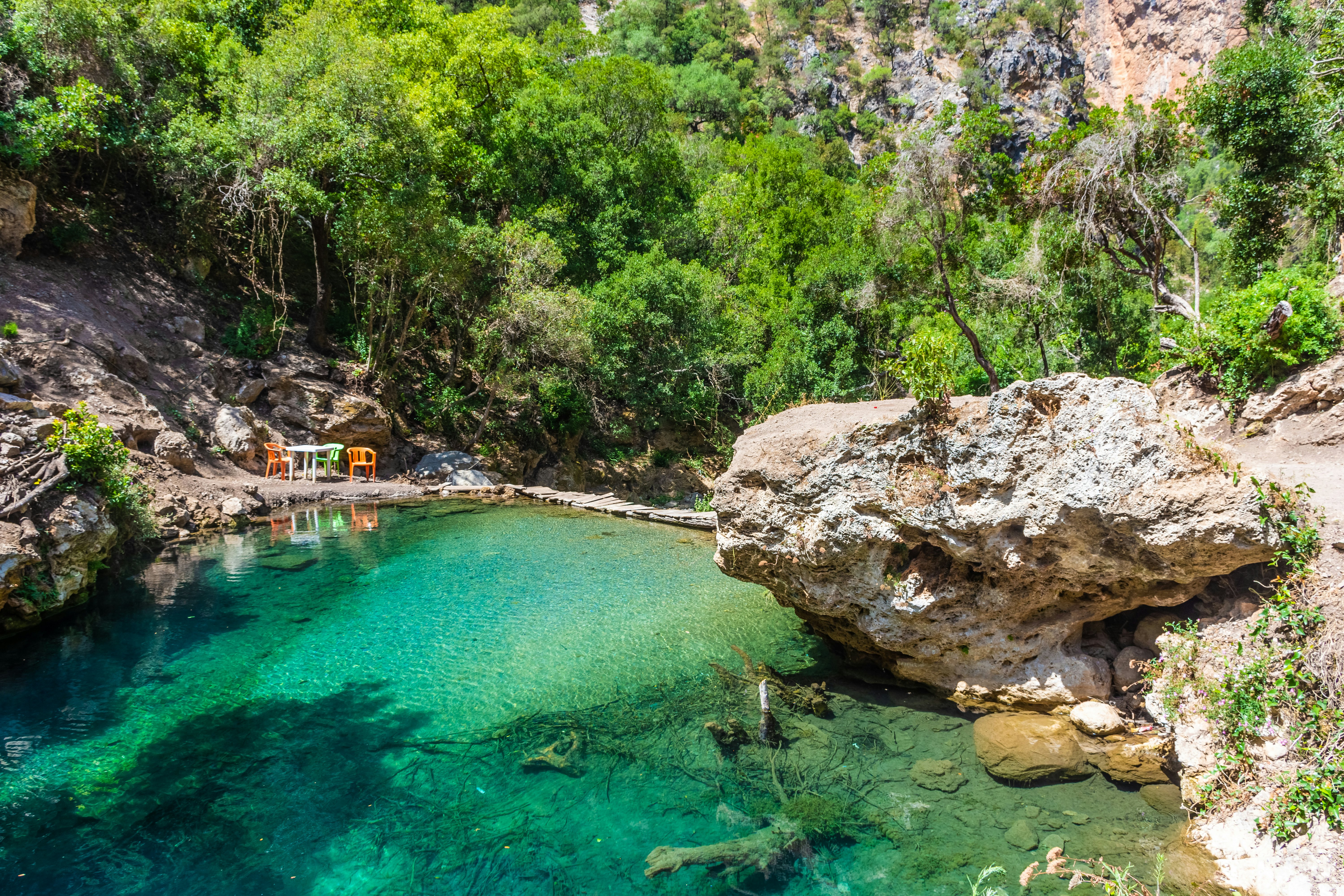
Day 2
Morning
The wild and wonderful Talassemtane National Park is on Chefchaouen's doorstep. The shimmering waterfalls close to the village of Akchour and the natural stone arch of God’s Bridge are the most popular hikes. On Sunday morning take a grand taxi to Akchour and follow the well-trodden paths. Enlist a local guide for longer hikes. The park’s higher reaches are home to the rare and endangered Moroccan fir, as well as lush green fields of cannabis. Wildlife can be shy, but you might have better luck with birdlife, including golden eagles and black-shouldered kites.
How to spend the day
Back in the city, nothing beats a hammam after an uphill hike. There are no-frills public bathhouses aplenty, but for a more indulgent experience, get Riad Cherifa’s pretty tiled hammam to yourself (book in advance). After being steamed, exfoliated, slathered in mineral-rich ghassoul (clay mask) and massaged with aromatic essential oils, you’ll emerge squeaky clean and utterly relaxed.
Dinner
It is said that the best Moroccan food is served at home, so Sofia is the next best thing. This female-owned restaurant serves traditional dishes to a smattering of alfresco tables across from the small kitchen. The pastela rolls and vegetarian couscous are arguably the best in town; wash it all down with a refreshing mint lemonade.

Day 3
Morning
Return to Cafe Clock on Monday for a half-day cooking workshop. Start by choosing your four-course menu with the chef; zaalouk (a smoky mix of eggplant, tomatoes and spices) and seasonal tajines are easy to recreate back at home. Hit the souq to buy ingredients, from the aromatic spice shop to the halal butcher. And marvel at the haggling skills of the jbeliya (mountain) women in their distinctive chichia hats, made of reeds and decorated with pompoms, at the twice-weekly market. Then get hands on in the kitchen before sitting down to enjoy the fruits of your labor while drinking in the last blue-tinted views.






